South African Defence Forces
About SADF armoured vehicles
The Union Defence Force
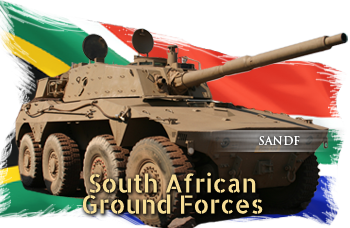 Before 1910 and the constitution of the Union of South Africa by General Jan Smuts, here was no South African army proper but militias independent of Boers, on horseback for the most, which choosed guerilla warfare and distrusted the discipline of large standing armies. Smuts as the Union's first Minister of Defence established in 1912 the Union Defence Force (UDF) which implied for the first time a standing army with a core of career NCOs and soldiers, the Active Citizen Force (ACF), temporary conscripts and volunteers and a cadet system. A conscription for all white men of 17-60 years was established but there were already volunteers in droves for the 17-25 years slice. Eventually these forces were based in 15 military districts. The core of the UDF was made of five regiments of the South African Mounted Riflemen each with an organic company of artillery. Acting as a police, these 23,400 force was called to suppress the industrial strike of Witwatersrand.
Before 1910 and the constitution of the Union of South Africa by General Jan Smuts, here was no South African army proper but militias independent of Boers, on horseback for the most, which choosed guerilla warfare and distrusted the discipline of large standing armies. Smuts as the Union's first Minister of Defence established in 1912 the Union Defence Force (UDF) which implied for the first time a standing army with a core of career NCOs and soldiers, the Active Citizen Force (ACF), temporary conscripts and volunteers and a cadet system. A conscription for all white men of 17-60 years was established but there were already volunteers in droves for the 17-25 years slice. Eventually these forces were based in 15 military districts. The core of the UDF was made of five regiments of the South African Mounted Riflemen each with an organic company of artillery. Acting as a police, these 23,400 force was called to suppress the industrial strike of Witwatersrand.
In 1914 however, the SA government choosed to side with the allies and Great Britain, and despite a strong internal opposition, General Botha send a 67,000 strong expeditionary force to invade the German South-West Africa (Namibia) which surrendered in july 1915. The 1st South African Brigade was sent on the western front, which distinguished itself at the battle of Delville Wood in 1916. There was also a prolonged campaign against German East African colonies, especially against the Ascaris. 20,000 SADF infantry brigades fought there under the command of Jan Smuts. Another unit participated in the Operations in Palestine against the Turks.
Articles
- ⚯ South Africa in WW2
- Marmon Herrington II
- Marmon Herrington III
- Marmon Herrington IV
- Olifant Mark 1A
- Olifant Mk1B
- Olifant Mk2
- Rooikat
- Buffel APC
- Eland 902
- Bateleur FV2
- Casspir APC
- Ratel IFV
- G6 Rhino
- Paramount Marauder
- Mamba APC
- Valkiri MRAP
- ESR220 Thutlwa
- Samil 100 Kwevoel
- Crocodile MPV
- Rodef 4.5/7.5 MPV
- Rodef MPCV
- Rhino/Tusker MPV
- Leopard MPV
- Pookie MPV
- Cougar MPV
- Ojay/Kudu MPV
- Selous Scout MAP TCV
- Selous Scout 4.5 Map Cab
- Scorpion MPMC
- Selous Scout ACV
- Selous Scout Pig
- Selous Scout Hot Lips
- Selous Scout Bullet
Rhodesian Vehicles:
World War Two
The demobilization of the Interwar was total, but in 1922 the conscription (21 years, four years of service) was re-established, and fixed a professional army, which was asked to perform internal security duties. This force was focused on the Khoikhoi revolts, and in 1932, was deployed against the Basters independentist movement and the next year against the Ovambo on the border with Angola which demanded to be freed from the Union. After a drastic budget cut in 1926 and the reduction to six military districts, but it was raised to 56 000 men in the 1930s.When world war two broke out, large units for the South African Army fought with distinction in the East African, North African, and Italian campaigns whereas the Home defence was reorganized into several commands, at Capetown, Orange Free State Command, Natal Command, Witwatersrand, Roberts' Heights and Transvaal Command, or at East London. The core of the army in 1939 was made of 5,353 regulars and 14,631 Active Citizen Force (ACF). A shortage of men and materials appears quite quickly. Both race policies reduced the able body for conscription to white males, and there was no material support from Great Britain for modern guns and light weaponry or armoured vehicles. Plus training only emphasis commando actions in the bush.
However since the early 1930s, there was already an industrial basis to start with. The South African already seeked for a mass-production suitable armoured cars for its needs, and eventually the choice fall on the Ford 3-ton truck chassis assembled locally at Dorman with parts from Canada and the US (Marmon-Herrington) and armoured plates from the South African Iron & Steel Industrial Corporation, ISCOR. The Marmon-Herrington Armoured car was born. This SAF vehicle was mass-produced in 1940-1941 and helped support infantry units particularly in East Africa against the Italians. Later on, the Mark II was created and British weapons were imported like the Boys AT rifle that gave some capabilities against Italian Armor. The Mark III (1942) was all improved, and the Mark IV (1943), a band new vehicle with a QF 2-pdr main gun in turret. Over 2000 were produced. The ambitious 8x8 Mark V-VI were prototypes, too heavy for service. In total around 5746 Marmon-Herrigton Armoured cars were built in South Africa until 1944, many of which saw service with the British and other allied armies, and many other operators after the war. Some served in police duties until the late 1970s.
The creation of a tank corps was con substantial with equipments given by the allies, especially of US origin. In North Africa, the US loaned the South African Armoured Corps Tank regiments operating there 88 Stuart M3A1s. Outside Universal Carriers, the bulk of the SADF units operating later in Italy with the 6th South African Armoured Division was provided by M4 Sherman medium tanks, M4/105s and M10 Wolverine tank hunters. The M3 Stuarts were maintained for a long time in service, being retired in 1955 and stored until 1961, then reactivated in 1962 for troop training with the 6th South African Division and withdrawn for good in 1968. In 1946, SA purchased also two Churchill AVREs, and 26 Comet tanks that arrived in 1954. But the latter were stored at Durban and saw service in 1964 when training South African Armoured Corps instructors before being withdrawn in 1968. SADF also operated 96 Universal Carrier Mk2s in 1946, and later 150 more refurbished Mk2s and T16 obtained from Great Britain in 1951-52. All were withdrawn in 1965. 15 ex-British M4/105 or locally called "Sherman 1B" were kept for training and also phased out in 1965.
Postwar reorganization
In 1948 the old resentment against the British influence in South Africa led to a surge of Afrikaner nationalism, favouring the growth of the National Party (NP) that wins the elections the same year. The Army was therefore "afrikanerized" with expanded military service obligations and and established strict conscription laws. The service constituted of a three month draft and then three weeks per year during four years. The Defence Rifle Associations were disbanded and replaced by a standing army 90,000 strong, divided into one Infantry Division and six SA Armoured Divisions (5 of infantry and one the sole 11th Armoured Brigade). Due to the lack of volunteers, it was disbanded in 1949 and 1953.Constitution of SADF (1957)
With the growing threat of a war in the middle east, an armoured division was constituted with an order of 200 Centurion tanks from Great Britain. The large scale Exercise Oranje in 1956 tried some tactical ideas about conventional operations in a simulated nuclear warfare. Eventually the next year in 1957, by the Defence Act (No. 44), the UDF was renamed South African Defence Force (SADF) and organization was changed once more, including a great deal of rapid-reaction and commando units. "Royal" titles in several units were dropped and personal grows from 20 000 to 80 000 in the next two decades because of the border wars with Namibia and Angola. In 1961, the SA flag changed once more, from the old Union orange-white-blue colors to a green flag with the old flag in the corners and the five pointed star/diamond with the three arms in the bottom right corner. This flag will be changed once more after the 1994 reforms, with red replacing the green and the Zulu-inspired Transvaal Lion instead of the star.SADF in the cold war: Border wars (1966-89)
This era saw at the same time a growing international isolation of South Africa due to its apartheid policies, traduced by mass arrests and rather vigorous anti-riot demonstrations, with casualties. Therefore a large part of the army was used for internal security duties, whereas another part was active during a long protracted war against neighbouring nations about border disputes. The Defence Act (No. 85) of 1967 expanded military obligations and specified a year of training, varied periods of active duty and and several years in reserve status for every white males fit for service.At that time, France was after Great Britain the main provider of weaponry and armoured vehicles, starting with the Panhard AML armoured car. During all the operations led against the SWAPO rebels (South-West Africa People's Organisation), the armoured cars inspired a local production as the Eland Mk.7 and quick-started the production of other vehicles. The centurion became the only tank in service with SADF whereas wheeled armoured vehicles were developed and became an integral part of the SADF specificity. The dry and rather flat terrain where these vehicles fought was of course the main reason.
With the independence of Angola, SADF forces assisted with its auxiliary South West African Territorial Force were found also at war with the UNITA rebels in Angola in the late 1960s and against the Cuban troops that supported them. Due to the lack of manpower, the provisional 7 SA Division along with the 17, 18 and 19th Brigades was short lived, from 1965 to 1967 when it was replaced by the Army Task Force and 16th Brigade. In the 1970s, the segregation policy was lifted for recruitment but still, non-whites were confined to auxiliary duties and never front line. In 1973, the 7th SA Infantry Battalion, 8th SA Infantry Battalion and 11th Commando were created. The next year, the army was reorganized into two divisions under a corps headquarters and reorganized in the 1980s to keep a strong conventional core (Citizens Force, of the 7th and 8th Divisions) while being capable at the same time of flexible counter-insurgency operations (with nine territorial commands).
The armoured units benefited from a serie of upgrades performed on the Centurion as the "SKOKIAAN" program in 1968 (there was an ongoing UN embargo then that prevented spare parts and upgrades to get through) with the fitting of a 372 kW (500 hp) V12, Detroit diesel, and in 1973 a Continental fuel-injection engine and a three-speed Allison Semi-Automatic transmission performed at Pretoria. However only 11 were so converted and nine maintained in operation on the Angolan border in 1976, but the project was terminated due to their lack of range. Later the project Semels was launched, followed by the Olifant Mark 1A program and the even more ambitious Mark 1B with the help of Israel. The 7th Division, (HQ Johannesburg) comprised the 71st, 72nd, 73nd motorized brigades, and division troops, whereas the 8 SA Armoured Division (HQ Durban) 81, 82, 83st armoured and motorized brigades and division troops.
During the border wars, SADF forces captured a large array of soviet-built Angolan/Cuban vehicles: T34/85s, T-54s, T-72MIs, BMP-1s, MT-LBs with SA-13 "GOPHER" SAMs, BTR-152s and BTR-60s. Contrary to Israel, these were displayed as "spoils of war" but never reused in active service.
1994 reforms
In witingLinks
The SA army on WikipediaSADF equipments on Wikipedia
Official webpage
SAAR armour museum
Gallery
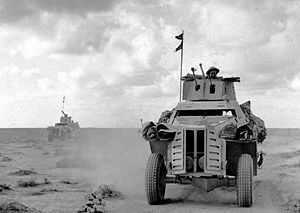
Marmon-Herrington Mark 2
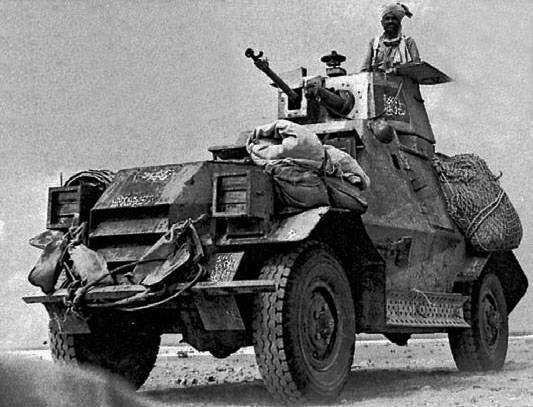
Marmon Herrington mark 3 with indian troops in 1942
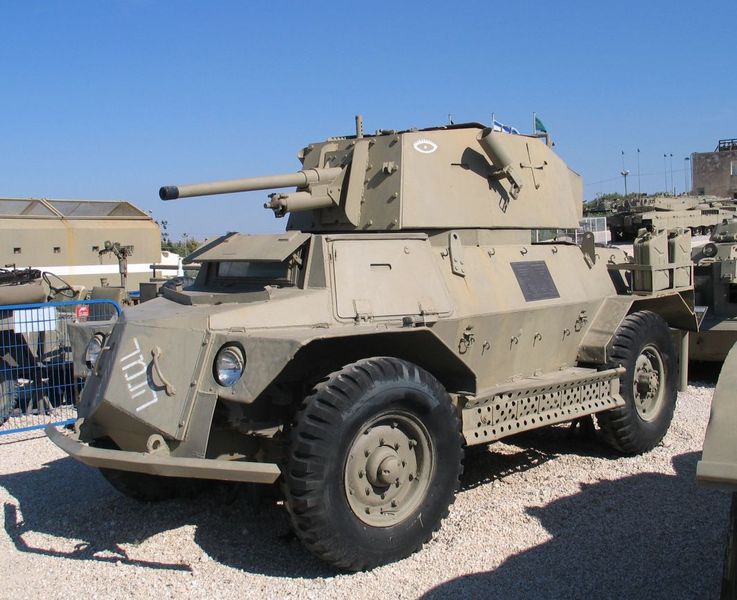
Marmon Herrington mark IV heavy recce AC (1943)
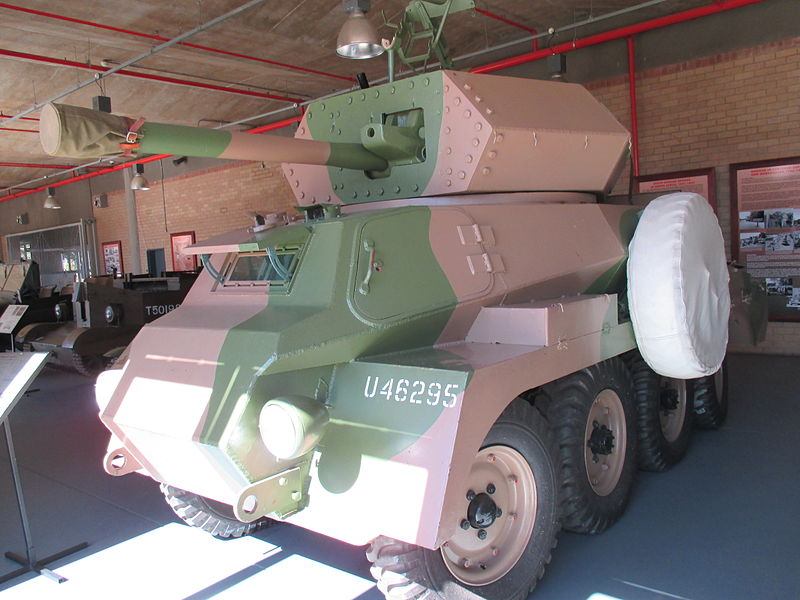
prototype of the 8x8 Mark VI (never produced s deemed too heavy).
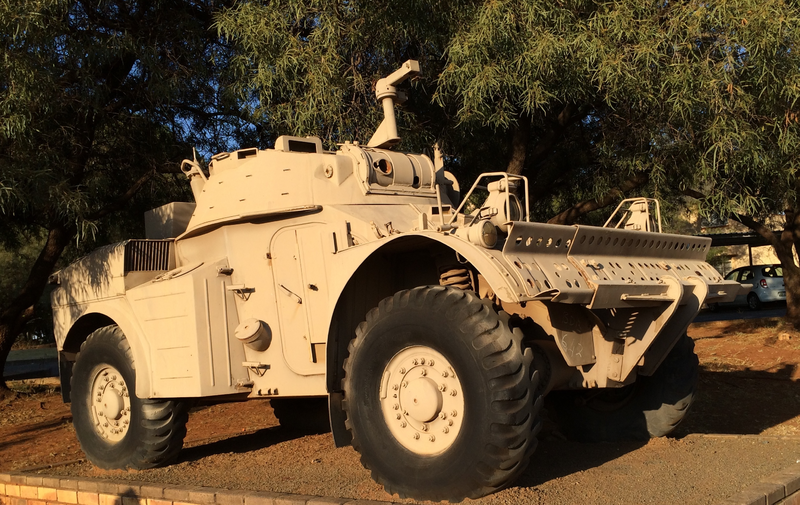
Eland 60, the mortar-carrier version (now deactivated)
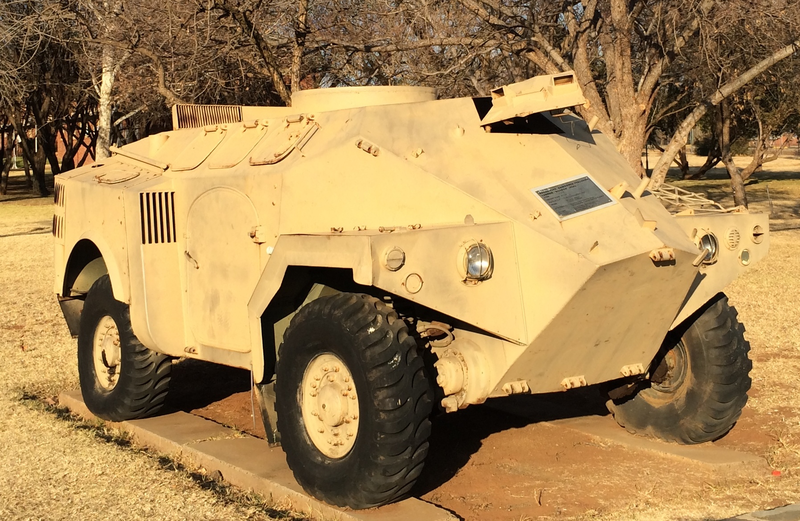
SADF Bosbok APC, one of the three prototypes for the locally-built amphibious M3 Panhard by Sandrock Austral (Pty) Ltd.
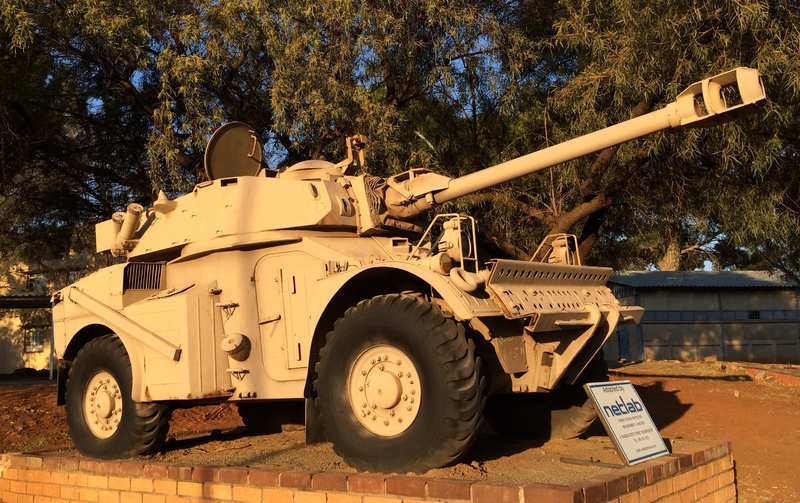
Eland Mark 7 or Eland 90 (1200 built, widely exported in Africa), quite successful against Angolan Armour.
Saracen mark 3. In 1953 South Africa purchased 10 Saracen Mk.1 for evaluation, followed by an order of 270 in 1954, arriving in 1956. They were placed in storage or used for training. 8 were allocated to the South African Police. All were withdrawn from service in 1975. A Refurbishing was performed by the Railway Workshop, Uitenhage in 1979-1981. In Service until 1991.
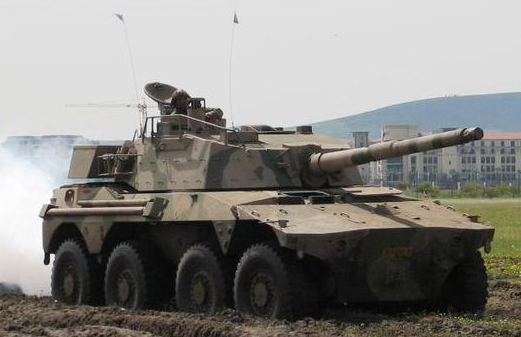
Rooikat wheeled tank destroyer (1976). With a long history of development, this wheeled tank was to replace the Eland mark 7 and incorporated all lessons learnt from the Angolan war. It was produced only from 1989, when the war was over. 240 are in service today.
Olifant Mark 2. A long history of development and modification with the modified Mark 1a, then the rebuilt Mark 1B and modernized Mark 2. The Olifant is today\'s SADF MBT in service, with 227 vehicles.
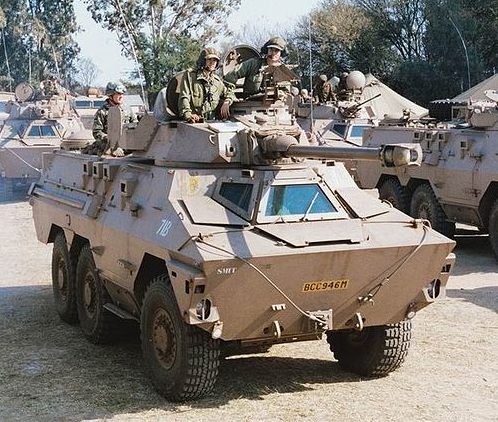
Ratel 90 IFV (1968). This vehicle produced from 1974 to 1200+ vehicles was to be the main SADF wheeled APC and was declined into many variants (see below). 434 are in service today, with 666 in reserve plus 16 ZT3 (36 in reserve).
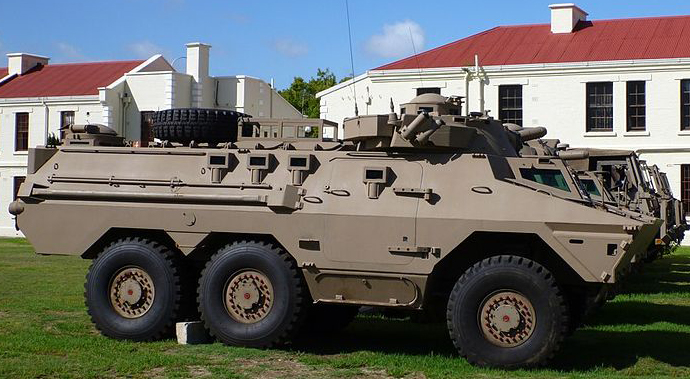
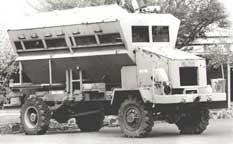
Hippo Mark 1 MRAP (now deactivated as the Buffel, replaced by the Casspir)
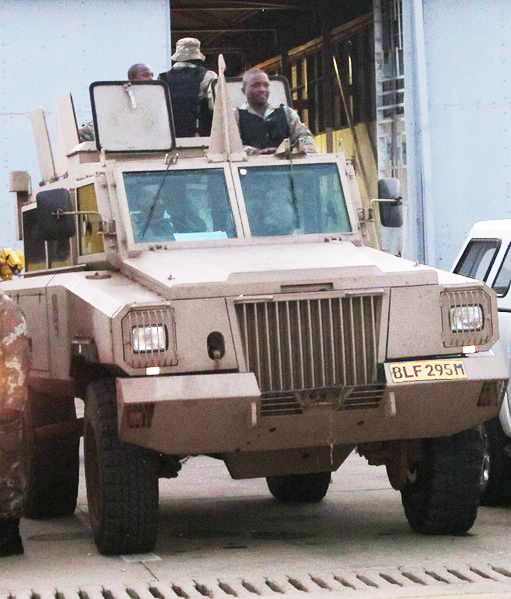
Mamba Mark 3 APC-MRV (440 in service today)
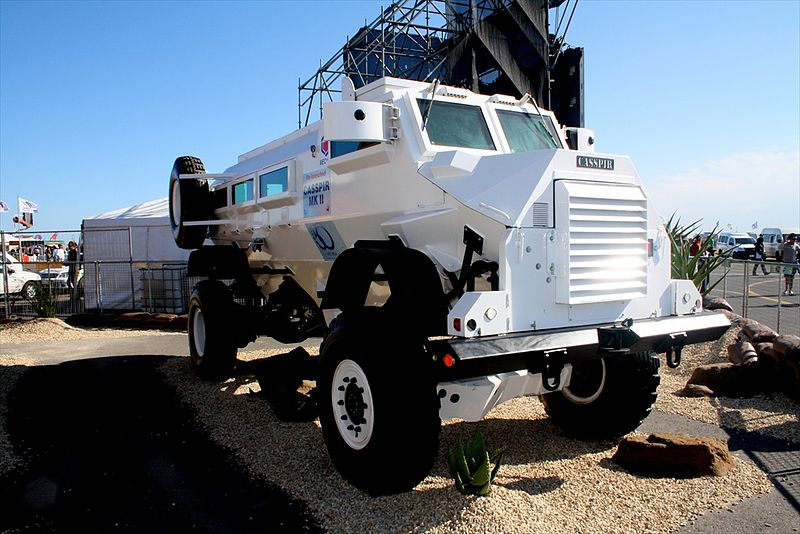
Casspir Mark 2 APC/MRAP (370 in service today)
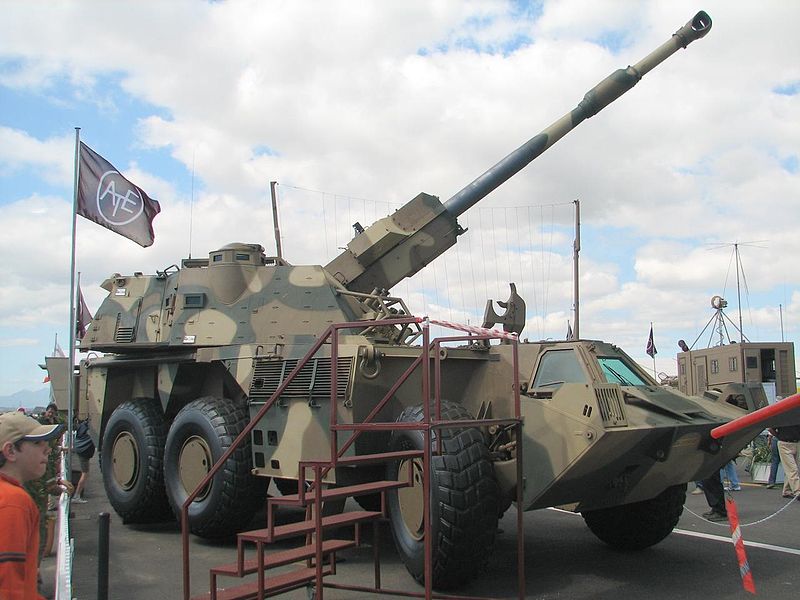
Denel G6 Renoster howitzer fast carrier (1987). 43 in service today.
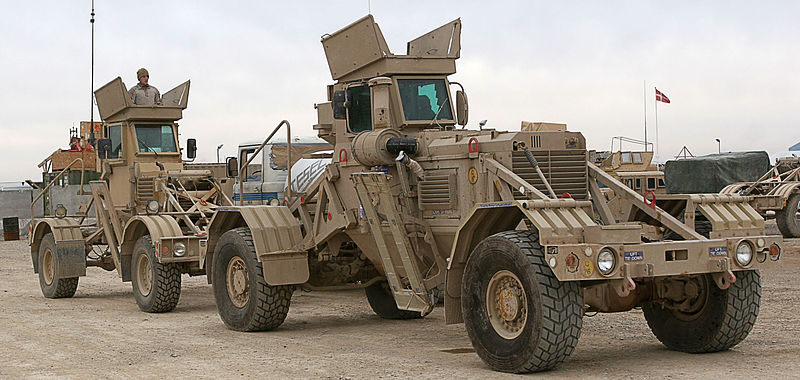
Husky tactical mine clearing system

Cold War Tanks


































Cold war tanks posters

Cold War Main Battle Tanks

Cold War Soviet Army
Museums, Movies, Books & Games
The Tanks and Armor in pop culture
Tanks and armored vehicles in general are only really grasped when seen first person: The mass, the scale, it's all there. Explore also the way tanks were covered in the movie industry, in books and in video games.Movies:
Best tanks movie on warhistoryonline.com
On imdb.com
On bestsimilar.com/
miltours.com
liveabout.com/
watchmojo.com
Video Games:
pcgamesn.com
historyhit.com
levvvel.com
vg247.com/best-tank-games
mmobomb.com/
alienwarearena.com
